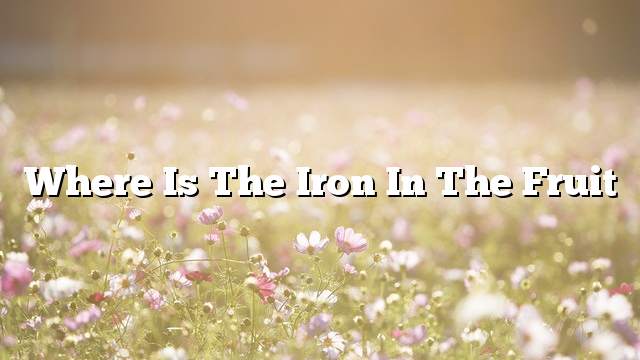What is iron
Iron is a metal needed by the human body to carry out the functions of red blood cells that transport oxygen to all the cells of the body to produce energy, so a diet that lacks iron-rich sources leads to low levels of energy and thus leads to weakness and fatigue, For growth, body development and the formation of many hormones and tissues, iron is also necessary to maintain healthy cells, skin, hair and nails. People usually lose small amounts of iron through urine, feces, the digestive system and skin, but women lose more iron during menstruation.
Iron sources
Iron is found in a large number of foods, and its sources in food are divided into two parts:
- Animal Resources : These sources supply the body with Heme iron, which the body absorbs and uses in different functions in a more effective way than plant sources. Examples of animal sources include meat, chicken and fish.
- Plant sources , Which provides the body with non-heme iron, which is less effective. Iron in plant sources is associated with other compounds that reduce its absorption in the human body. These compounds are called phytates, and are found in whole grains and dried beans , And for the benefit of iron found in plant sources, the following measures can be taken:
- Eat foods rich in vitamin C, such as citrus, strawberries, green leafy vegetables, peppers, cauliflower, and iron-rich foods at the same meal. This increases the absorption of iron too much; vitamin C can reduce the effect of some of these compounds.
- Tea and coffee contain compounds such as caffeine and tannin, which are associated with iron and inhibit its absorption in the body, so that it can reduce the absorption of iron by 50-90% .
- If you are taking calcium supplements, you should take them between meals so as not to reduce the absorption of iron in your meals.
- It is worth noting that a balanced and diverse diet, including iron-rich animal and plant sources, and selection of foods rich in vitamins, minerals and fiber is very important to maintain the health of the body and avoid malnutrition and lack of various nutrients, including iron.
Plant sources of iron
There are many plant sources of iron, including the following:
- Legumes: Olives, lentils, and peas.
- Seeds: such as pumpkin seeds, sesame, flax seeds.
- Nuts: Cashew nuts, almonds, pine nuts.
- Vegetables: Mushrooms, potatoes, tomato paste, broccoli, green leafy vegetables such as spinach.
- Whole grains: such as oats, quinoa and whole grains; they contain more iron than refined grains.
- Molasses, dark chocolate, dried thyme.
- fruits.
Fruits containing iron
Fruits are not the food group that people use to increase iron content in their diet. However, some fruits contain a good proportion of iron, including:
- Dried peach and peach juice ; One cup of peach juice contains 3 grams of iron; peach juice is a rich source of fiber, vitamin C, manganese, potassium and many other nutrients.
- Mulberry: A fruit of high nutritional value; one cup contains 2.6 grams of iron, and berries are a rich source of antioxidants and vitamin C.
- Dried fruits , Like:
Iron deficiency
Iron deficiency is the most common deficiency in the world, and occurs most often in children and women, especially pregnant women; 20% of women, 50% of pregnant women and 3% of men suffer from low levels of iron in their bodies; Certain blood tests cause iron deficiency to lead to anemia, which in turn leads to a range of symptoms, including the following:
- General fatigue.
- Accelerating heartbeat.
- Shortness of breath when performing various activities.
- pallor.
- a headache.
- Cognitive and motor deformities in children, which lead to difficulties in learning in the future.
- Iron deficiency is often associated with malnutrition, malabsorption disorders, and loss of blood, so people with iron deficiency often lack other nutrients.
The human body needs iron
The following table shows the RDA for iron to meet the needs of the human body depending on the age group:
| Age | Male | female |
|---|---|---|
| 3-1 years | 7 mg | 7 mg |
| 8-4 years | 10 mg | 10 mg |
| 13-9 years | 8 mg | 8 mg |
| 18-14 years | 11 mg | 15 mg, pregnant 27 mg, breastfeeding 10 mg |
| 50-19 years | 8 mg | 18 mg, pregnant 27 mg, nursing 9 mg |
| 51 years and over | 8 mg | 8 mg |
Vegetarians are more likely to have iron deficiency than people who eat meat. People who are vegetarians only need 1.8 times more iron than people who eat meat, so women generally need 32 mg ), And after menopause it becomes (14 mg), which is the same amount as men, while the need of pregnant women (49 mg).
